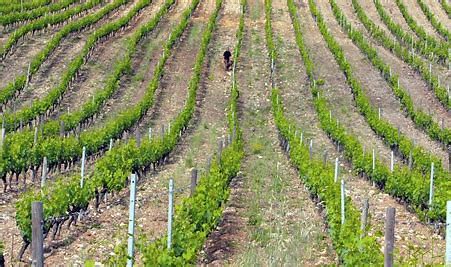Historically, the Corsica wine region has a dual origin. First and foremost, it is just as for Provence, the Greeks who introduced viticulture to Corsica. The difference from Provence is that Corsica has been influenced by Italy, or what was then Italy when Lombardy and then Pisa and finally Genoa invaded Corsica and influenced both the culture and viticulture. The varieties used in Corsica are still comparable to those used in Italy. Nielluccio called Sangiovese in Italy, Moscata, Aleatico, Vermentino, Genovese, Biancone and Biancolella, to name a few. If the wine culture in Corsica started in antiquity, it is only after the reconciliation with France that the production picked up. So much, that in 1850 the viticulture accounted for ¾ of Corsica’s income.
 The whites and rosés are in general to be drunk young and suit well to seafood and fish. The red wines fit, depending on age and tannins, generally to different kinds of meat dishes. What is worth noting is that some white wines age very well and can therefore be stored a couple of years. There are four appellations AOP in Corsica wine region where the “Vin-de-Corse” can be divided into 5 miniappellations.
The whites and rosés are in general to be drunk young and suit well to seafood and fish. The red wines fit, depending on age and tannins, generally to different kinds of meat dishes. What is worth noting is that some white wines age very well and can therefore be stored a couple of years. There are four appellations AOP in Corsica wine region where the “Vin-de-Corse” can be divided into 5 miniappellations.
It can therefore, in a sense, be considered that there are 9 different appellations:
- Vin de Corse: produced in red, white and rosé and can be made anywhere on the island except from in the area defined as Patrimonio in the north. “Vin de Corse” varies in taste depending on where it is produced. Five different subcategories have therefore been introduced to define the type of wine: -Coteaux the Cap Corse (northern Corsica), -Calvi, -Sartène, -Figari, -Porto-Vecchio
- Ajaccio: a small appellation that extends around Ajaccio. It is mainly Sciaccarellu grapes which are used for the reds and rosés and Vermentino grapes for the whites.
- Muscat-du-Cap-Corse: a tiny appellation in northern Corsica producing sweet white wines. Fit perfectly with cheese and desserts.
- Patrimonio: probably the most prestigious Corsican wine.
- Niellucciu grape for the reds and rosés and Vermentino grapes for the whites create typical wines with character of high quality: the reds are fruity and spicy and suitable for storage. The rosé is fruity and strong. The whites are generous and aromatic.


